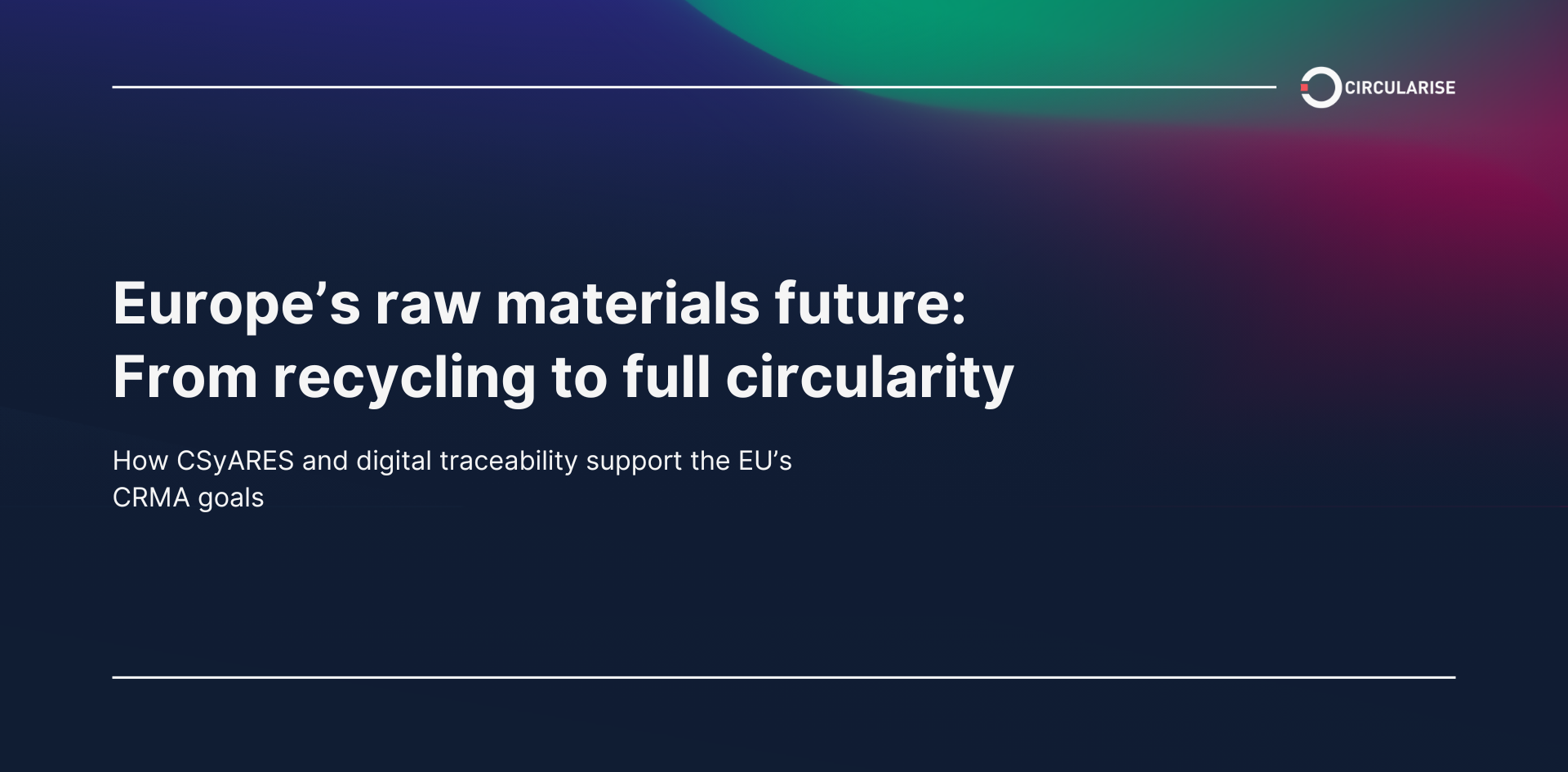Many manufacturing companies have been chasing a source of recurring revenue, inspired by the flourishing software-as-a-service (SaaS) market and companies like Philips, turning their hardware into service models1. Unfortunately, the lack of direct relationships and communication with end customers has been a barrier for many manufacturers. With the use of digital product passports, this is about to change.
Digital product passports weave a digital thread throughout the supply chain connecting manufacturers directly with consumers. This new connection paves the way for many new possibilities for businesses to implement different types of PaaS models, which we will now explore in more detail.
.avif)
Implementing PaaS with a lease model
One common option to capture continuous value delivery is the lease model, and with a digital connection throughout the value chain, businesses can unlock this recurring revenue.
Managing your product’s lifecycle with a lease model means establishing return loops and product service capabilities. This will provide oversight of service and repair data, and durability information, ultimately leading to reduced procurement costs and better product quality. However, lease models often come with challenges, such as the burden of increased transportation costs, more capital on the books, and the need for an exceptional level of customer service. You will also be required to expand manufacturing assets for repair and remanufacture, either in-house, or outsourced.
However, adopting a service model requires market acceptance. If this change will be disruptive for your industry, careful execution and timing are crucial. An example of how this can look is the car manufacturer Riversimple, who implemented service models throughout their value chain, from cars through to the mining company for platinum. A transformation that perhaps surprisingly, was readily adopted once using service models was suggested by Riversimple to its upstream suppliers2.
Capture value with a performance-based delivery model
Performance-based delivery models for PaaS operate on a pay-per-use principle, with different variants such as per hour, per km, and per refill. This can enhance the customer experience by providing the user with:
- Reduced upfront expense
- Reduced risk of (premature) failure
- Reduced maintenance costs and
- The ability to control expenses by adjusting usage behaviour.
The benefit for the provider of the performance-based delivery model is the ability to translate any improvements in durability and reduced operating costs (e.g. for maintenance,) into:
- Increased margins
- Improved customer loyalty or even lock-in
- Oversight of the product lifecycle and maintaining the capital of the product even at end of life
However, the potential gains of such a model also comes with additional risks and responsibilities. Some of the drawbacks include:
- The increased financing of working capital
- Additional operations for transporting and processing goods
- The high degree of customer service required
Exploring resale and remanufacture offerings
Even without maintaining ownership of your products and adopting a full product-as-a-service model, you can still capitalise on recovered resources by exploring resale models. Refurbishing returned products significantly reduces material and production costs, while also providing a new product offering to a new market segment.
In some cases, community sharing can also be facilitated and monetised. This works best for products which spend a large proportion of their lifetime unused, and if the product becomes an available resource for many, then it can be better utilised. An example of this is the option Lynk & Co created for car owners to lease their cars to other people nearby3.
Adding resale processes helps to mitigate the financial risks of maintaining ownership of products, however it limits oversight and control of your products in the use phase. But this can be an ideal intermediate option for companies not ready to adopt a full PaaS model.
How digital product passports enable product-as-a-service models
Implementing a service model requires a new level of understanding and oversight over how your products are used, delivered, and maintained. In complex and convoluted value chains this is particularly difficult, and this is where digital product passports are especially valuable.
When implementing a service model, the most important use of digital product passports is as a communication channel to the customer and other value chain members. Adding this new digital layer to your products provides intimacy with your customers well after they leave your store or your website. The digital product passport allows for easy access to product information and customer support by scanning the product identifier.
Digital product passports offer huge flexibility in the information that can be delivered to the value chain. To implement a service model, it is important to include return, collection, and repair instructions in the digital product passport, to facilitate easy returns and good customer experience.

Information to facilitate your service and repair operations can also be included and selectively shared with actors of the value chain who require it. This means including information on product composition (such as a product circularity data sheet), dismantling instructions, and even data from the use phase of the product. Information on product usage can even be linked to the digital product passport by inputting data collected by IoT sensors.
The product usage data will be tied to your performance-based revenue model and can be appropriately delivered to other areas of your business. This same information can be used by the end customer to review product usage and health, and also by you to gather key information to guide service, repair, and provide durability insights.
Implementing a service model
Whether setting up a new business or adjusting existing operations, start by planning PaaS implementation using the business model canvas to consider all the necessary requirements.
It is worth noting that unless your business is in its early stages or operating on a small scale, transitioning to a product-as-a-service model can be a dramatic change. While it may be tempting to adopt an incremental approach to test such a model, it is important to understand that many of the benefits of a service model can only be realised with scaled implementation.

Circularise is the leading software platform that provides end-to-end traceability for complex industrial supply chains. We offer two traceability solutions: MassBalancer to automate mass balance bookkeeping and Digital Product Passports for end-to-end batch traceability.
For specific guidance on using digital product passports to implement a PaaS model, contact us







